Ioanna Manolopoulou
Counterfactual Learning with Multioutput Deep Kernels
Nov 20, 2022Abstract:In this paper, we address the challenge of performing counterfactual inference with observational data via Bayesian nonparametric regression adjustment, with a focus on high-dimensional settings featuring multiple actions and multiple correlated outcomes. We present a general class of counterfactual multi-task deep kernels models that estimate causal effects and learn policies proficiently thanks to their sample efficiency gains, while scaling well with high dimensions. In the first part of the work, we rely on Structural Causal Models (SCM) to formally introduce the setup and the problem of identifying counterfactual quantities under observed confounding. We then discuss the benefits of tackling the task of causal effects estimation via stacked coregionalized Gaussian Processes and Deep Kernels. Finally, we demonstrate the use of the proposed methods on simulated experiments that span individual causal effects estimation, off-policy evaluation and optimization.
Interpretable Deep Causal Learning for Moderation Effects
Jul 07, 2022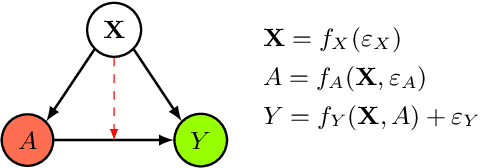
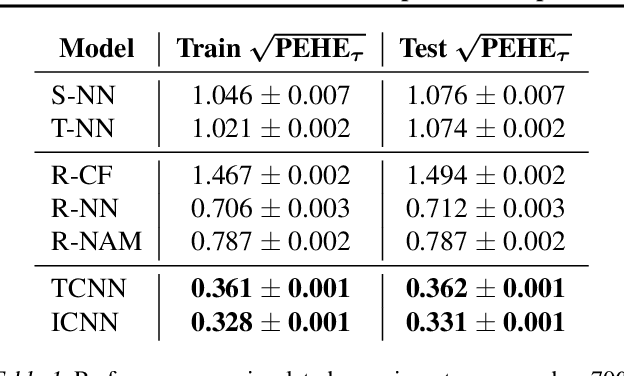
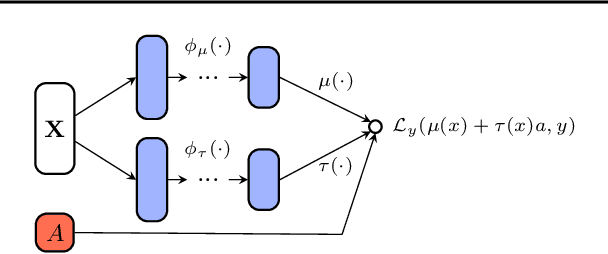
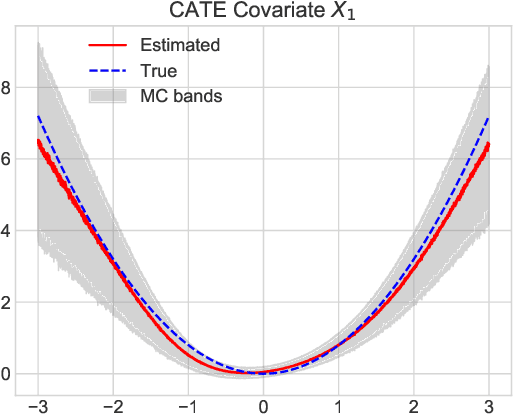
Abstract:In this extended abstract paper, we address the problem of interpretability and targeted regularization in causal machine learning models. In particular, we focus on the problem of estimating individual causal/treatment effects under observed confounders, which can be controlled for and moderate the effect of the treatment on the outcome of interest. Black-box ML models adjusted for the causal setting perform generally well in this task, but they lack interpretable output identifying the main drivers of treatment heterogeneity and their functional relationship. We propose a novel deep counterfactual learning architecture for estimating individual treatment effects that can simultaneously: i) convey targeted regularization on, and produce quantify uncertainty around the quantity of interest (i.e., the Conditional Average Treatment Effect); ii) disentangle baseline prognostic and moderating effects of the covariates and output interpretable score functions describing their relationship with the outcome. Finally, we demonstrate the use of the method via a simple simulated experiment.
Sparse Bayesian Causal Forests for Heterogeneous Treatment Effects Estimation
Feb 12, 2021
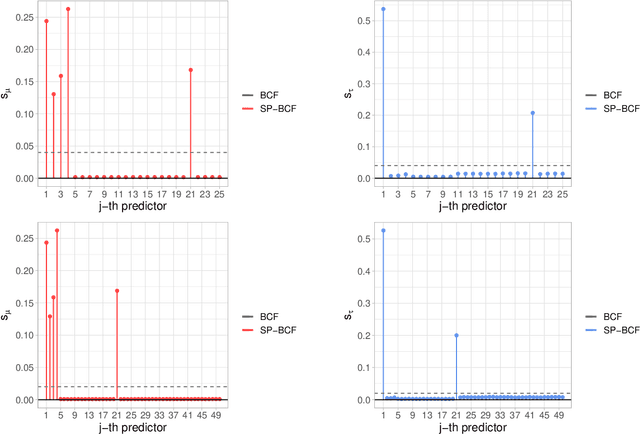
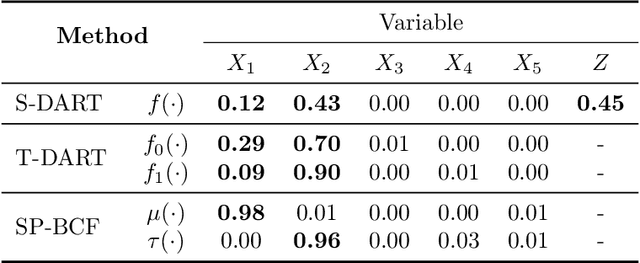
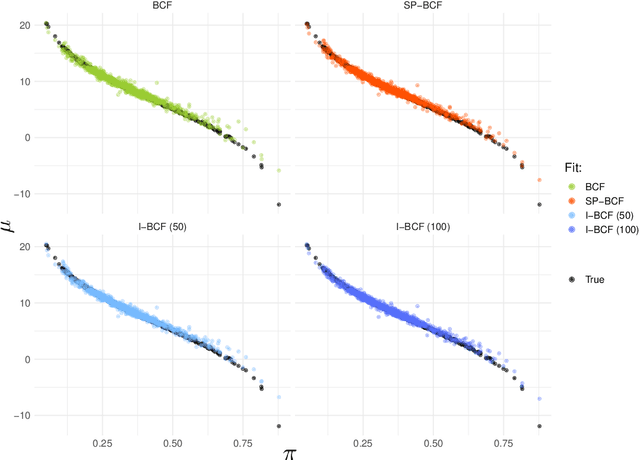
Abstract:This paper develops a sparsity-inducing version of Bayesian Causal Forests, a recently proposed nonparametric causal regression model that employs Bayesian Additive Regression Trees and is specifically designed to estimate heterogeneous treatment effects using observational data. The sparsity-inducing component we introduce is motivated by empirical studies where the number of pre-treatment covariates available is non-negligible, leading to different degrees of sparsity underlying the surfaces of interest in the estimation of individual treatment effects. The extended version presented in this work, which we name Sparse Bayesian Causal Forest, is equipped with an additional pair of priors allowing the model to adjust the weight of each covariate through the corresponding number of splits in the tree ensemble. These priors improve the model's adaptability to sparse settings and allow to perform fully Bayesian variable selection in a framework for treatment effects estimation, and thus to uncover the moderating factors driving heterogeneity. In addition, the method allows prior knowledge about the relevant confounding pre-treatment covariates and the relative magnitude of their impact on the outcome to be incorporated in the model. We illustrate the performance of our method in simulated studies, in comparison to Bayesian Causal Forest and other state-of-the-art models, to demonstrate how it scales up with an increasing number of covariates and how it handles strongly confounded scenarios. Finally, we also provide an example of application using real-world data.
Estimating Individual Treatment Effects using Non-Parametric Regression Models: a Review
Sep 14, 2020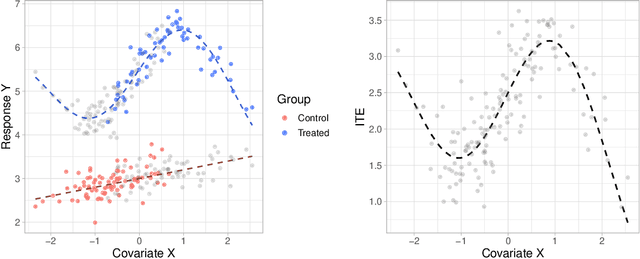
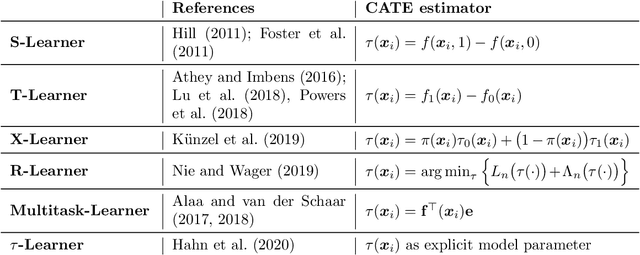
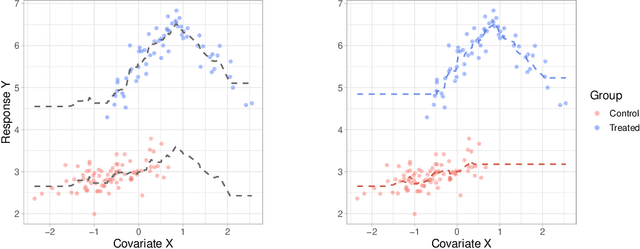
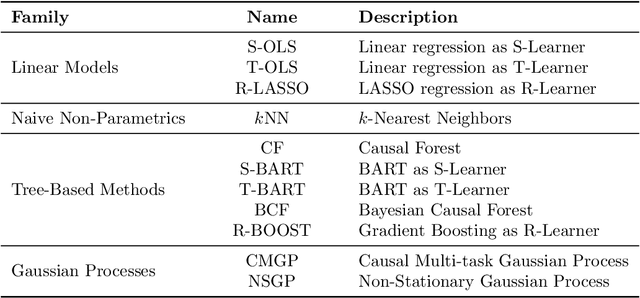
Abstract:Large observational data are increasingly available in disciplines such as health, economic and social sciences, where researchers are interested in causal questions rather than prediction. In this paper, we investigate the problem of estimating heterogeneous treatment effects using non-parametric regression-based methods. Firstly, we introduce the setup and the issues related to conducting causal inference with observational or non-fully randomized data, and how these issues can be tackled with the help of statistical learning tools. Then, we provide a review of state-of-the-art methods, with a particular focus on non-parametric modeling, and we cast them under a unifying taxonomy. After presenting a brief overview on the problem of model selection, we illustrate the performance of some of the methods on three different simulated studies and on a real world example to investigate the effect of participation in school meal programs on health indicators.
Modelling Grocery Retail Topic Distributions: Evaluation, Interpretability and Stability
May 04, 2020



Abstract:Understanding the shopping motivations behind market baskets has high commercial value in the grocery retail industry. Analyzing shopping transactions demands techniques that can cope with the volume and dimensionality of grocery transactional data while keeping interpretable outcomes. Latent Dirichlet Allocation (LDA) provides a suitable framework to process grocery transactions and to discover a broad representation of customers' shopping motivations. However, summarizing the posterior distribution of an LDA model is challenging, while individual LDA draws may not be coherent and cannot capture topic uncertainty. Moreover, the evaluation of LDA models is dominated by model-fit measures which may not adequately capture the qualitative aspects such as interpretability and stability of topics. In this paper, we introduce clustering methodology that post-processes posterior LDA draws to summarise the entire posterior distribution and identify semantic modes represented as recurrent topics. Our approach is an alternative to standard label-switching techniques and provides a single posterior summary set of topics, as well as associated measures of uncertainty. Furthermore, we establish a more holistic definition for model evaluation, which assesses topic models based not only on their likelihood but also on their coherence, distinctiveness and stability. By means of a survey, we set thresholds for the interpretation of topic coherence and topic similarity in the domain of grocery retail data. We demonstrate that the selection of recurrent topics through our clustering methodology not only improves model likelihood but also outperforms the qualitative aspects of LDA such as interpretability and stability. We illustrate our methods on an example from a large UK supermarket chain.
 Add to Chrome
Add to Chrome Add to Firefox
Add to Firefox Add to Edge
Add to Edge